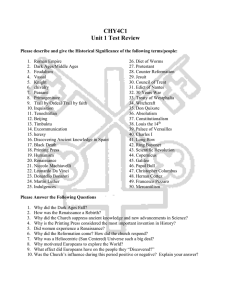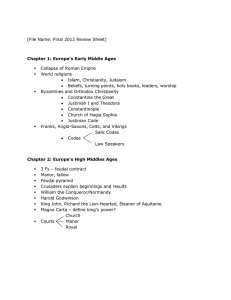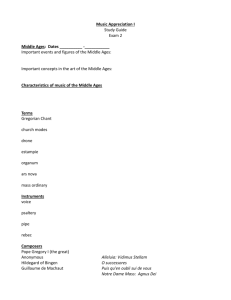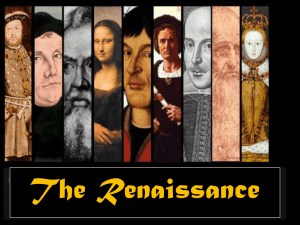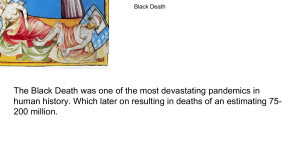renaissance vs middle ages compare contrast graphic organizer KEY
advertisement
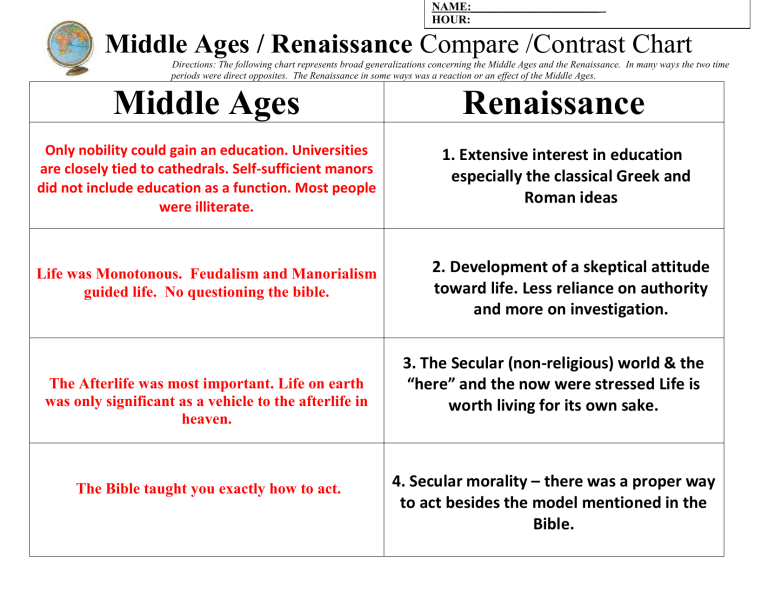
NAME:______________________ HOUR:_______________________ Middle Ages / Renaissance Compare /Contrast Chart Directions: The following chart represents broad generalizations concerning the Middle Ages and the Renaissance. In many ways the two time periods were direct opposites. The Renaissance in some ways was a reaction or an effect of the Middle Ages. Middle Ages Renaissance Only nobility could gain an education. Universities are closely tied to cathedrals. Self-sufficient manors did not include education as a function. Most people were illiterate. 1. Extensive interest in education especially the classical Greek and Roman ideas Life was Monotonous. Feudalism and Manorialism guided life. No questioning the bible. 2. Development of a skeptical attitude toward life. Less reliance on authority and more on investigation. The Afterlife was most important. Life on earth was only significant as a vehicle to the afterlife in heaven. The Bible taught you exactly how to act. 3. The Secular (non-religious) world & the “here” and the now were stressed Life is worth living for its own sake. 4. Secular morality – there was a proper way to act besides the model mentioned in the Bible. Middle Ages Church doctrines were honored, Sacraments held extreme value, Excommunication and Indulgences taken advantage of by the Clergy. All Christians in the West were Roman Catholic and some in the East were Orthodox. Church Power was at an all-time high. No questioning the authority of the King or the Pope or a greater lord. Renaissance 5. Church doctrines and ceremonies were rejected and the Reformation resulted. 6. All Christians were not Catholic or Orthodox some were Protestant, Lutheran, Calvinist, Baptist, Anglican, Etc. 7. Church Power was hurt by Babylonian Captivity, the Reformation and Scientific Revolution. 8. People questioned the authority of Secular rulers and the Pope. Middle Ages Renaissance The individual held no importance. Everything was done or created for God. 9. The Individual was Important and had the Right to Self-Expression (i.e. artists sign works). Most people never traveled further than 20 miles from their village or town, self-sufficient manors gave no reason for travel. 10. Inter-regional and intercontinental trade and contact flourish leading to cultural diffusion of ideas. No tolerance. No experiences. (i. e. Crusades) and No trade among other peoples. 11. Tolerance of Turkish peoples and other religions including but not limited to Islam. The Bible Taught you everything you needed to know in regards to life. No questioning the bible. 12. Nation states rise and become the basis of European politics with the exception of Germany and Italy. Middle Ages Renaissance Manorialism guided peasant life on the manor. Feudalism was also a major influence on the economy (obligations & dues). 13. Capitalism is the main economic system No Money (coins). Bartering was the main means of exchange. Land was the greatest measure of wealth. Pessimistic outlook on life. Looking towards the next harvest; monotonous. Art was only created for Religious purposes. No culture, no Cultural Diffusion, very few Technological advancements other than farm production. 14. Money + Trade + Production are the basis of wealth. 15. Optimistic outlook on life. 16. Period of great Artistic + Cultural + Technological outbursts.
